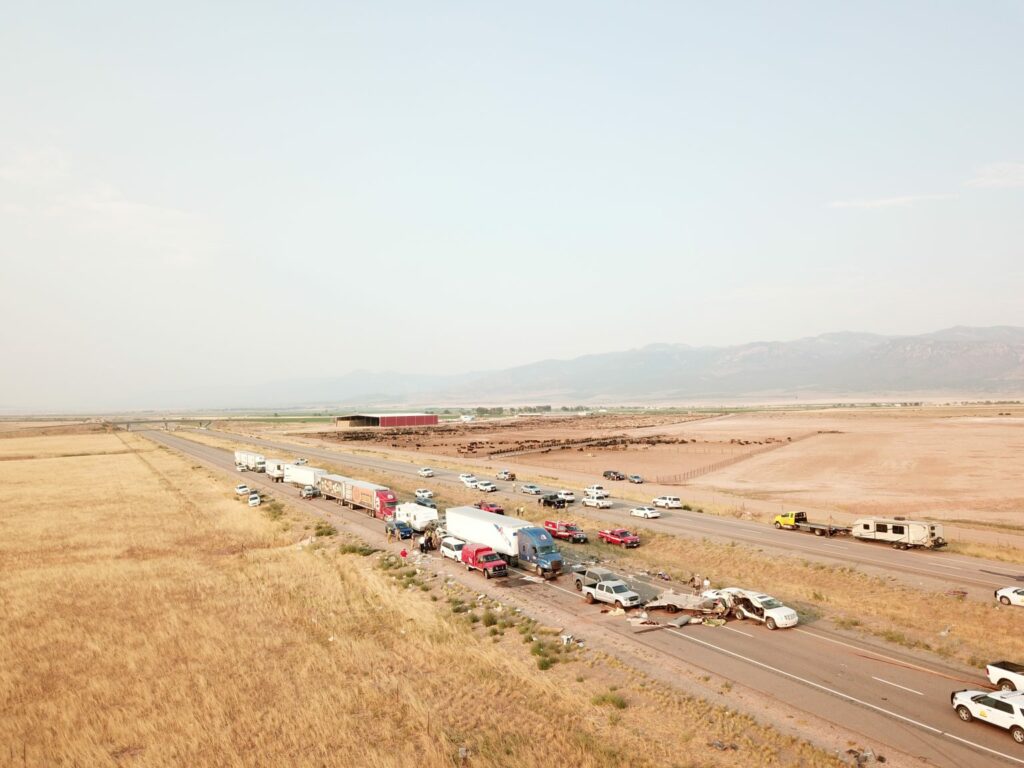
Driving safety experts shared tips for BYU students who will be making the trip to Provo for fall semester.
Pre-drive precautions
Students can make their drive to Provo smoother by making sure their car is running properly. Utah Highway Patrol Sgt. Cameron Roden recommends doing a vehicle pre-check before heading on the road.
“Make sure our tires are right, all of our lights are operating the way they should; make sure your fluid levels are good,” Roden said.
Doing a pre-drive inspection will help the driver stay on the road and off the side of the highway, Roden said.
Apart from making sure their car is in working order, drivers should also prepare their bodies for the long drive. “Make sure you’re giving yourself a chance to get proper sleep in the day leading up to the trip, so that you’re well rested, especially if it’s across several states,” said Utah Department of Transportation Public Information Officer John Gleason.
Tips while driving
After driving for hours on end, drivers can begin to battle fatigue, a major factor in crashes among student drivers, Roden said. Once a driver starts to feel even a little bit of fatigue, Roden recommends letting a co-driver take over or stopping at a safe location to rest.
A key part of battling fatigue as a driver is recognizing symptoms brought on by fatigue, Gleason said. “The best way to battle fatigue is recognizing that you’re tired. You’ll start noticing that you’re day dreaming; you’re not really remembering the last mile or so you’ve traveled.”
Gleason added that sleep will always win out when a driver tries to press on while in a fatigued state.
Incoming 21-year-old BYU student Matthew Blackley, who made the 14-hour drive from Seattle to Provo with a friend, said students should drive within their comfort and have plans if things go wrong to make the experience a safer one. He and his friend stopped in Boise so they didn’t have to drive at night.
Another aspect drivers should be conscious of during their drive is speed, which is a major factor in Utah crashes according to Roden and Gleason. A Utah Highway Safety Office report shows that speed-related accidents contributed to 6,542 crashes in 2020, ranking higher than distraction, alcohol and drug-related crashes.
As drivers desire to reach their destination after hours on the road, they begin to pick up their speed in hopes of reaching their destination sooner, Roden said.
Blackley experienced this anticipation and said it was the hardest stretch of the drive. “I kind of wanted to get it over with.”
Another simple tip is wearing a seatbelt, which Gleason said can go a long way in protecting lives. He added that 50% of vehicle fatalities are from people not wearing seatbelts, despite these individuals only making up 10% of the population in Utah.
Gleason added that wearing a seatbelt isn’t only for the safety of the individual driving, but for other passengers as well, since an unbuckled passenger can act as a projectile in an accident, which could injure or kill other passengers in rare occasions.
“If you’re thrown from your seat, you’re endangering everybody else,” Gleason said. “You can actually injure or kill somebody in the vehicle; fortunately it doesn’t happen often, but it has happened before.”
Battling weather

Students making the journey before fall semester don’t have to worry about snow during their drive, but there are still weather conditions they should be aware of. Gleason said these include rain, storms and sandstorms.
Drivers should get off the freeway if the weather conditions are bad enough. But if they don’t have that option, they should reduce their speed, Gleason said. “You don’t want to take extra risks, especially in a storm. You don’t want to be anywhere near freeway speeds; you really have to slow down in those weather conditions.”
An unfortunate outcome of driving during dangerous weather conditions was a 22-vehicle crash that killed eight people on July 25. It was caused by a sandstorm in Kanosh, Utah. Drivers faced blinding conditions caused by the sandstorm, making it difficult to see a few feet in front of them.
If drivers find themselves in a sandstorm, Roden said they should slow down their speed and avoid stopping in the middle of the road.




